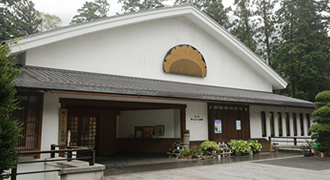
櫛かんざし美術館は故 岡崎智予さんの40年にわたるコレクションをもとに展示を開始しました。所蔵品は約4000点となり、髪かざりのほかに、当時の女性風俗を偲ぶ衣装、身装品、生活用品も幅広く展示し、ご鑑賞の奥行を深めております。
日本女性の髪かざりは、大別して櫛(くし)・笄(こうがい)・簪(かんざし)となりますが、時代や身分により誠に多様であります。
素材は木・べっこう・象牙・瀬戸物・ガラス・水晶・金銀等、それぞれの特徴を活かした加工技術も、蒔絵・象嵌・彫刻・金銀細工と、当時のあらゆる美術工芸手法を駆使し、その華麗、繊細さはすばらしいものがあります。
デザインも花鳥風月・人物・歴史・文学・芸能など、あらゆる事象をとりあげ、この小さな装身具の中に、日本文化の粋を表していることに驚かされます。
屋外の庭園では、多摩川の清流を眼下に四季折々の山野草が、皆様のご清遊をお待ちしております。
On display at Kushi Kanzashi Museum are what the late Chiyo Okazaki had collected for 40 years.
The collection includes about 4,000 pieces of hair accessories as well as clothing, accessories and livingware of various periods in history. This large volume collection will offer a clear picture of women of yore and make your appreciation of the items more meaningful.
The hair accessories used by Japanese women are categorized into the following three types: kushi (comb), kogai (hairpin) and kanzashi (hair stick).
Wood, tortoise shell, ceramic, glass, crystal and metal are used to produce these hair accessories.
These materials are processed in the way that their characteristics stand out. Applied techniques, such as gold relief, inlay, carving and filigree, are of the best quality of the time. The hair accessories are splendid, delicate, and wonderful artwork.
A wide variety of motifs, including beautiful scenery of nature, human figures, historical things, literature and performing arts, are applied to design the accessories. It is amazing that the essence of Japanese culture is expressed in these small ornaments.
Seasonal wild flowers welcome you at the outside garden which has the command of the limpid steam of the Tama River below.











